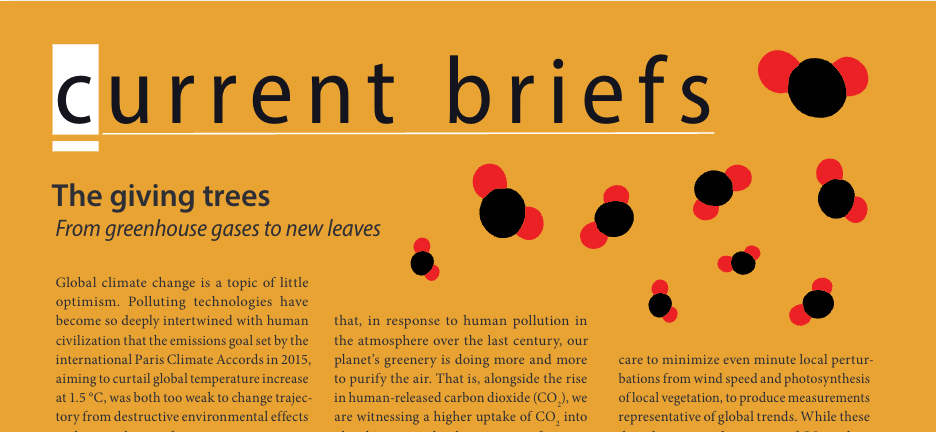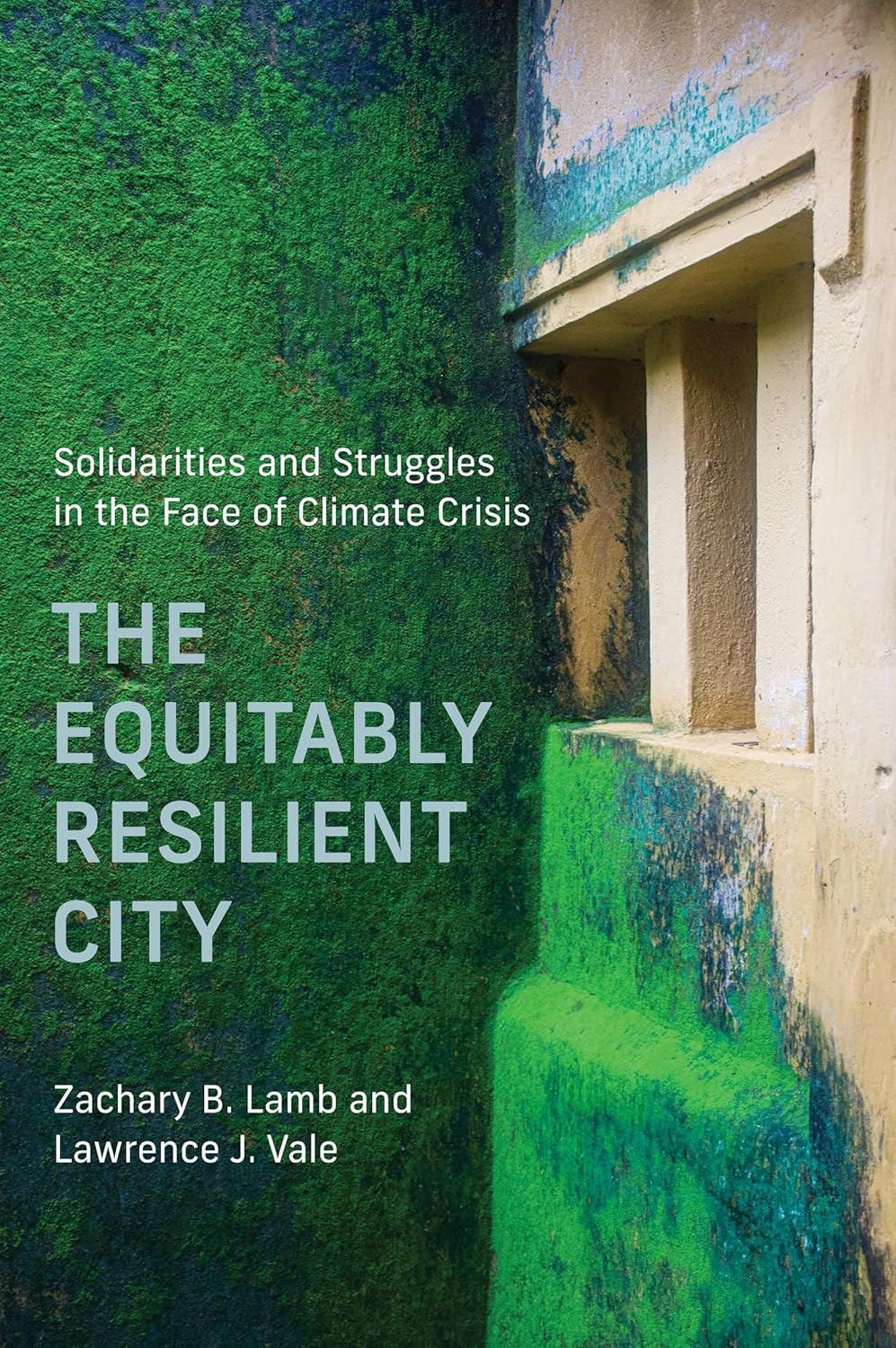The giving trees
From greenhouse gases to new leaves

Global climate change is a topic of little optimism. Polluting technologies have become so deeply intertwined with human civilization that the emissions goal set by the international Paris Climate Accords in 2015, aiming to curtail global temperature increase at 1.5 °C, was both too weak to change trajectory from destructive environmental effects and too ambitious for signatory nations to have met in the years since. Under current policies, experts project a 3.5 °C rise in global temperature by the end of the century. We have begun a seemingly inevitable advance towards the death of coral reefs, melting of polar ice caps, and havoc of extreme weather events.
However, new compilations of environmental research in a review article by Sophie Ruehr, a PhD candidate in the Department of Environmental Science, Policy, & Management, offer a strong argument that, in response to human pollution in the atmosphere over the last century, our planet’s greenery is doing more and more to purify the air. That is, alongside the rise in human-released carbon dioxide (CO2), we are witnessing a higher uptake of carbon dioxide into plant biomass and soils, or in scientific terms, an enhancement of the “land carbon sink.”
Some of the strongest evidence for this trend is a mass balance analysis of CO2 that Ruehr summarizes as “the inflows and outflows of the atmosphere”—how much is produced, absorbed by land and sea, and added to the air. Atmospheric CO2 levels have been monitored since the 1960s at the high-altitude Mauna Loa Observatory in Hawaii with confirmation from a host of other observatories around the world. These observations are performed with carefully calibrated spectroscopic instruments, taking care to minimize even minute local perturbations from wind speed and photosynthesis of local vegetation, to produce measurements representative of global trends. While this data shows a steady increase of CO2, it does not match the growth of human emissions in the last century. Since the mass balance must sum to zero, the quantity of CO2 taken up by Earth’s carbon reservoirs—land and sea—must have also grown: in fact, they have approximately doubled over time.
One supporting line of evidence is the observation of global growth of green mass via satellite imagery. Across the globe, scientists make numerical estimates of the number of leaves per square meter, termed Leaf Area Index (LAI), a measure derived from satellite imagery, regional classes of vegetation, and empirical data on these different classes. Scientists compared LAI estimates from three different satellite products between 1982 and 2016. Despite some uncertainty in tropical areas due to signal saturation with the vegetation density, they overall found significant LAI growth, supporting the so-called “land sink theory” from an entirely different angle.
The primary mechanism for the growth of the land sink is thought to be CO2 fertilization. To some degree, plants react to higher concentrations of CO2 in the atmosphere by simply consuming more of it via photosynthesis. Further changes occur at high latitudes, where vegetative populations are typically limited by the cold, a barrier that is abated by rising temperatures, accompanying melting permafrost with greener boreal forests. The effects of this growth in vegetation are not fully known, but it may play into the water cycle, relocating the additional groundwater taken up by plant life and distributed by atmospheric circulation patterns and precipitation. Additional study may be needed to understand the degree of this redistribution of water and other possible effects.
The bottom line, however, is that this buffer to carbon emissions cannot grow indefinitely. At our current emission rates, models of planetary vegetation estimate that the size of the land sink will plateau around 2040–2050. In the meantime, these effects reinforce the value of forests and the damage of deforestation, particularly for old-growth forests, which hold large shares of carbon in addition to performing stable CO2 uptake. Further modeling is necessary to evaluate the long-term effects of elevated CO2 on the ecosystem. For study author Ruehr, another takeaway is a call for gratitude: “The earth has already offset so many of our emissions. That's a huge gift.”
This article is part of the Spring 2024 issue.





